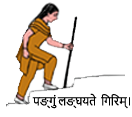The swelling of many muscles is called polymyositis. Various genetic and environmental causes are postulated for the occurrence of this rare disease. Moreover, it can be associated with various inflammatory connective tissue diseases such as systemic lupus erythematosus and Sjögren's syndrome. It can occur at any age (average 50-60 years) and is more common in females. Children can also be affected. Polymyositis associated with skin lesions is known as dermatomyositis.
Features
Diminished muscle endurance, symmetric muscular weakness, and fatigue develop insidiously over 3-6 months. Low-grade fever and weight loss may accompany. However, there is no pain in the muscles. The weakness usually starts in the shoulder and pelvic girdle muscles and spreads to the thighs and upper arms. Patients are unable to get up, climb stairs, or reach overhead objects. Extensive muscle involvement ultimately makes the patient wheel-chair bound. Involvement of throat muscles can cause difficulty in swallowing, whereas those of diaphragm lead to breathing difficulties. Skin involvement in dermatomyositis may precede muscle weakness and may present without muscle problems. Many peculiar skin rashes erupt on the face, hands, neck, shoulder, and front of the chest wall.
Other Features
- Joint pains, arthritis
- Cough and breathlessness due to involvement of lungs and muscles of breathing
- Difficulty in swallowing, abdominal pain, unsatisfactory bowel, diarrhea, and bleeding due to involvement of gastrointestinal tract
- Irregular pulse due to heart involvement
- Osteoporosis due to immobilization, glucocorticoids, and other factors
Investigations
A good clinical examination from a rheumatologist or neurologist is desirable. Blood examinations for muscle enzymes (creatinine kinase), myoglobin, and autoantibodies give valuable clues to diagnosis. Intramuscular injection should be avoided before blood tests as it can increase muscle enzyme levels. Electromyography (EMG) is a nonspecific diagnostic tool that needs to be performed following blood examination. Magnetic Resonance Imaging (MRI) shows swelling of muscle in patients with active myositis. However, a biopsy of the muscle indicated on MRI may be required in selected cases. Interpretation of biopsy samples needs to be done by an expert pathologist. 10% of cases of dermatomyositis are associated with cancer. All patients must, therefore, be investigated for occult cancer.
Management
Early diagnosis and treatment are essential for a good therapeutic outcome. High-dose glucocorticoids along with methotrexate are the mainstay of therapy at present. The dose of glucocorticoids is tapered later on. Azathioprine can be used alone or in combination with methotrexate. Cyclophosphamide is used in associated lung disease. Tacrolimus, mycophenolate, and rituximab can be used in resistant cases.
Exercise
Exercise is an essential part of therapy. Passive exercises must be commenced at an early active stage under the supervision of an expert physiotherapist. Passive exercises are safe and beneficial, but overuse of muscles must be avoided in this phase. Strengthening exercises should be started at a later stage after control of disease activity.
Inclusion Body Myositis
Inclusion Body Myositis (IBM) is a peculiar form of myositis with a more insidious onset over months to years. It is more common in males and leads to asymmetric involvement of the muscles of the forearm, hands, and leg along with the pelvis and shoulder. Although organ involvement is rare, IBM rarely responds to standard therapy.
